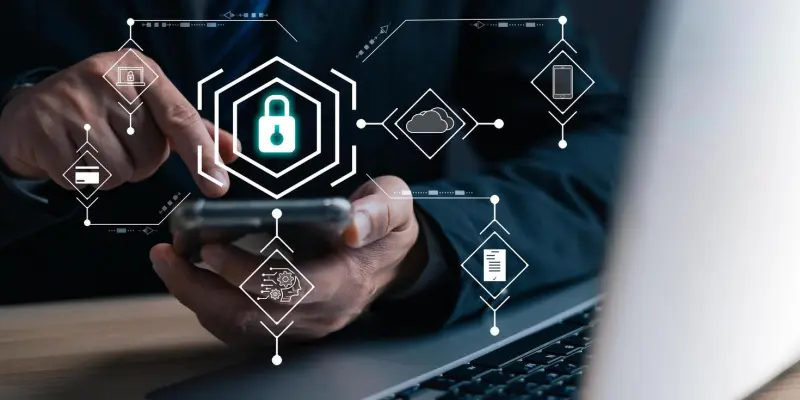A significant cybercrime operation has emerged over the past year, with security researchers identifying a staggering 93.7 billion browser cookies that have been stolen and are circulating on dark web marketplaces. Such a colossal number reflects a 74% increase from the previous year, highlighting the sophisticated methods employed by cybercriminals to compromise digital security. These cookies, seemingly innocuous pieces of data stored by browsers, have become lucrative targets for hackers due to the sensitive information they contain, such as authentication data. A comprehensive analysis by cybersecurity company NordStellar has revealed approximately 15.6 billion of these cookies remain active, posing immediate threats to users worldwide by facilitating session hijacking attacks, which could bypass standard security measures like passwords and multi-factor authentication.
The breach has been primarily attributed to advanced information-stealing malware, with Redline Stealer responsible for the largest haul—nearly 42 billion cookies. Despite its significant volume, only 6.2% of its harvested cookies remain active, suggesting a rapid turnover in their usefulness for criminal activities. In contrast, CryptBot exhibits exceptional effectiveness, with an alarming 83.4% active rate of stolen cookies. These figures underscore the evolving sophistication of malware tools, which extract session data from browser storage, enabling cybercriminals to gain access to user accounts by exploiting stolen session identifiers. Redline Stealer is not the sole contributor to this breach; Vidar and LummaC2 also play roles in this widespread cybercrime operation.
Modern Malware Techniques and Their Implications
The extraction of authentication data from cookies allows criminals to access user accounts without directly compromising passwords or other login credentials. Among the platforms most affected by these breaches, Google services stand out, with account access being compromised more than any other service. Google is followed by YouTube and Microsoft, illustrating the critical vulnerabilities inherent in widely used platforms. Contemporary infostealers are noted for their advanced techniques, incorporating methods such as AI-powered optical character recognition to capture valuable data, including cryptocurrency seed phrases and personal information. The sheer volume and diversity of data stolen have intensified concerns regarding identity theft and financial fraud.
Windows devices, in particular, have faced significant threats from these information-stealing tactics, accounting for 85.9% of the stolen cookies. This prevalence can be partly attributed to the widespread use of Windows operating systems in personal and business environments. Within the global landscape, Brazil, India, Indonesia, and the United States have been identified as regions most affected by these cybercrimes, showcasing a pronounced impact on both developing and developed nations. Experts emphasize the importance of regular cookie clearing and adopting robust endpoint detection solutions to prevent unauthorized data access, alongside user education initiatives to bolster individual defenses and awareness against such threats.
Proactive Measures and Evolving Malware Strategies
The rise in cookie theft has also highlighted the evolving strategies cybercriminals employ to spread malware. One prevalent method includes disguising malware as legitimate software or leveraging pirated applications. This approach entices users into unknowingly downloading malicious programs under the guise of popular or free tools, thus compromising their system security. To address such deceptive tactics, security experts advocate for proactive security measures and heightened vigilance among users, urging them to remain informed about the nature of malicious software and to scrutinize applications before installation. Strengthening legislative frameworks and international cooperation on cybersecurity are also recommended to combat the rapid proliferation of malware threats.
In the face of these developments, bolstering digital hygiene practices is imperative. Users are encouraged to update software regularly, utilize strong and varied passwords, and enable two-factor authentication where available to reduce the risk of unauthorized access. Businesses, on their part, should enhance security protocols through employee training and invest in advanced security technologies to safeguard critical data. As cybercriminals adapt, consistent vigilance and the implementation of comprehensive security measures remain crucial to mitigating the risks posed by information-stealing malware. This ongoing battle between cybersecurity experts and malicious actors underscores the importance of technological advancements in securing digital assets and maintaining personal and organizational privacy.
Looking Ahead: Mitigating Cyber Risk
Over the past year, a significant cybercrime operation has surfaced, with security experts discovering a staggering 93.7 billion browser cookies stolen, now flooding dark web markets. This represents a 74% surge from last year, indicating the advanced strategies cybercriminals employ to breach digital security. While cookies are small bits of data stored by browsers, hackers target them for the sensitive information they contain, like authentication details. NordStellar’s analysis found about 15.6 billion of these cookies remain active, posing immediate risks worldwide by enabling session hijacking, which circumvents security measures such as passwords and multi-factor authentication.
The breach is mainly due to sophisticated data-stealing malware, with Redline Stealer responsible for nearly 42 billion cookies. However, only 6.2% remain active, indicating their quick obsolescence for criminal use. Conversely, CryptBot proves highly effective, showing an alarming 83.4% of stolen cookies active. This highlights the evolving complexity of malware, which extracts session data, allowing criminals access via stolen identifiers. Vidar and LummaC2 also contribute to this extensive cybercrime network.

